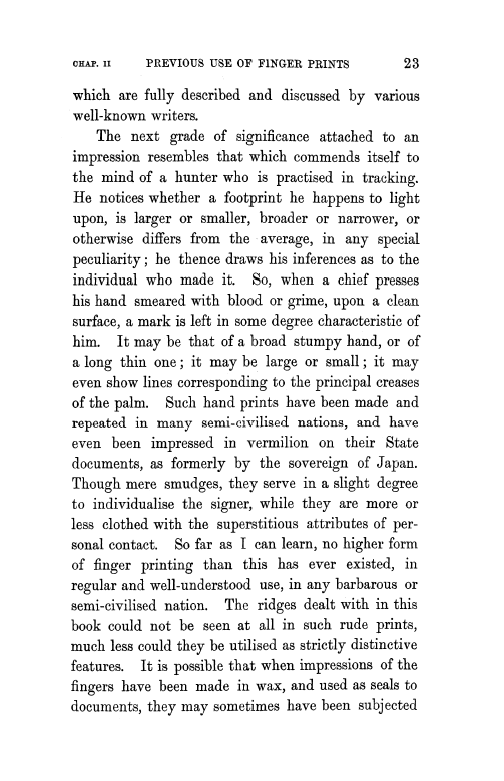CHAP. 11 PREVIOUS USE OF FINGER PRINTS
23
which are fully described and discussed by various well-known writers.
The next grade of significance attached to an impression resembles that which commends itself to the mind of a hunter who is practised in tracking. He notices whether a footprint he happens to light upon, is larger or smaller, broader or narrower, or otherwise differs from the - average, in any special peculiarity ; he thence draws his inferences as to the individual who made it. So, when a chief presses his hand smeared. with blood or grime, upon a clean surface, a mark is left in some degree characteristic of him. It may be that of a broad stumpy hand, or of a long thin one ; it may be large or small ; it may even show lines corresponding to the principal creases of the palm. Such hand prints have been made and repeated in many semi-civilised nations, and have even been impressed in vermilion on their State documents, as formerly by the sovereign of Japan. Though mere smudges, they serve in a slight degree to individualise the signer, while they are more or less clothed with the superstitious attributes of personal contact. So far as I can learn, no higher form of finger printing than this has ever existed, in regular and well-understood use, in any barbarous or semi-civilised nation. The ridges dealt with in this book could not be seen at all in such rude prints, much less could they be utilised as strictly distinctive features. It is possible that when impressions of the fingers have been made in wax, and used as seals to documents, they may sometimes have been subjected
